I’ve had Dissociative Identity Disorder (DID) since my earliest memories, so when I saw the new Moon Knight show coming out, I immediately raised an eyebrow. Having DID, one’s expectation of media portrayal tends to be… let’s say fraught. But Moon Knight is an interesting mixed case on this subject. Moon Knight has at times portrayed some of the most problematic parts of typical DID media representation, but it’s also done some really interesting work experimenting with new lenses for grappling with what can be a pretty difficult disease to understand. Reading Moon Knight with compassion for mental illness, then, is challenging, but also rewarding in some very unique ways.
What Is Dissociative Identity Disorder?
When I hear DID explained, I often hear people start with the DSM-V – the manual that mental health professionals use to diagnose mental illness. However, a diagnostic definition is going to focus on the abnormal, the alien, and the disordered, and apply that to the person who has the disorder. This can be a dangerous starting point for examining a media portrayal, particularly one like Moon Knight, where the interpretation of Spector’s pathology has changed over the history of the character.
I’d like to try a thought experiment instead, beginning with the popular understanding of the disease. The classic metaphor of DID is that of a ‘shattered mind’, like Jekyll and Hyde, as if the identity of the person was a plate once, and something took a hammer and broke it into a series of unusable fragments, waiting to be reassembled to allow a person to live a healthy life. The mental health profession used this type of metaphor to explain DID for a long time – a child has something happen to them that’s so terrible that it just ‘breaks their mind,’ and they have to hobble along broken-minded until they find someone to help them glue it back together.
This is problematic in two ways: first, it’s exceptionally disempowering to those of us who are supposed to just be wandering broken plates. Sometimes this interpretation manifests in visions of fragile, emotionally and mentally crippled people, waiting for someone to save them. Alarmingly more often in the media, it paints a bogeyman story of a perfectly reasonable person who could, at any moment, transform into a violent monster, a la the previously mentioned Jekyll and Hyde, or in Marvel, something like Typhoid Mary.
But beyond this danger, the metaphor is simply not a very accurate representation of how DID begins. The truth is that newer research both into DID and child development generally suggests that DID occurs when the child is so young that (to stretch the metaphor) they don’t even have a ‘plate’ yet. They just have a big lump of clay, waiting to be sculpted into a plate.
Children beneath a certain age have an amorphous, plastic identity, not yet formed into a single coherent self in the adult sense. In normal development, this means they can work with their parents, who will expose them to new experiences while helping them to learn to cope with these experiences. The end state of this process is that the child can foster a single identity, equipped with the tools to handle most of what life throws at it.
Of course, some people don’t have that support – some, instead, are compelled to cope with truly terrible things before they’ve ever had the chance to form that cohesive identity. In this case, the child may have no choice but to make their own tools without the benefit of help from an adult. There are many forms this can take. Dissociative Identity Disorder is one such form.
In DID, the child basically makes identities on the fly to fit different situations as they arise, allowing them the emotional distance to try to integrate a life experience so painful and contradictory that it can’t be resolved by the child into a single cohesive story.
We do not really see this process of formation in Moon Knight, and I’m actually fine with that, to an extent. The tendency towards focusing on trauma is one that can be problematic in the depiction of many mental health challenges, DID not least among them. There are times where recounting traumatic events can be powerful, but it also can veer towards the area of defining the individual by their trauma. People with DID live rich and varied lives just like those who live with a single cohesive identity, just like Marc Spector himself, and there are stories to tell about them that aren’t about their trauma.
What this whole process creates is a unique kind of person, commonly called a system in DID parlance. The system is still a single person, but within the mind, that person is spread across a number of individual identities, personalities or ego states. The most commonly accepted term for these are alters, though it is important to ask a system what term they prefer, as this can vary from one system to another. In a system, these different states were created impromptu and without the organizing principle of a single central identity to incorporate them into. It gets more complicated than just ‘an identity for each task’, but that’s a place to start to conceptualize it.
These identities, both because they do not have a central core self, and because the strict segmentation of experience was important for the child’s survival, do not fully share core aspects of what we normally think of as a ‘single person’- they may have different relationships, preferences, affections and most diagnostically important, memories. This is actually one of the more powerful (if a bit glamorized) parts of the Moon Knight trailer: he answers a phone that one of his alters seems to have hidden, and finds out that someone thinks he’s named Marc, a name that he does not recognize. This experience of having memories that are not available to all parts of the system is called a fugue state. While this dissociative amnesia can be present in other disorders, it is always present in DID.
Is this a disorder? Yes, but with some important caveats.
The ability to dissociate, to step outside of our experience is actually completely normal and one of the most powerful forces in the human brain – think of how women will recover from the trauma of childbirth or how we can disconnect and act reasonably in an emotionally charged emergency situation instead of panicking. Even more commonly, consider how you can abstract away from the process of driving to work, freeing your mind to perform other necessary or enjoyable tasks only to suddenly arrive at your destination without any active recollection of the drive itself.
Where this dissociation becomes a disorder is when the trauma becomes so severe and relentless that there is no time to rest and reintegrate those experiences into the internal life story. Dissociation itself is not the problem; the problem is being forced to dissociate with no opportunity to reintegrate experiences afterwards. When this happens to us as adults, this can be cause a trauma disorder, like PTSD. In children with DID, they learn to make a virtue of necessity, and develop the ability to take these experiences and immediately compartmentalize and abstract them, giving them as much power as possible to face whatever is coming next.
Illustrations of DID in Moon Knight
In issue 13 of Jeff Lemire and Greg Smallwood’s 2016 Moon Knight, we can see this illustrated. In the midst of a fascinating story, Marc’s reality quickly shifts from one reality to another, to a flashback of the past and then back again. It’s disorienting just to read it, and the Bellaire’s use of color combined with with Smallwood’s framing and interposition of watercolor and ink drawing really sells this scene as what they are – Khonshu mentally attacking Marc at his weakest point – guilt and shame over his past. Smallwood’s art illustrates this by dissociating Marc’s two alters. In the pages set in the present, he exists as Mr. Knight, who’s clean, pen and ink art reflects his surroundings, all deep shadows and black and white. When he is dealing with the present, with the attack itself, Marc dissociates into this practical, inhuman alter.
But then falling back into a flashback, his environment changes dramatically. As the flashback assaults him with violent burnt reds and browns, he dissociates into the smiliaryl umber-hued Marc Spector alter. This scene is not a crisis of strength, but a crisis of conscience, one where Mr. Knight would be less helpful. He needs the more human, imperfect, rough and tumble identity of Marc and Spector.
However what we see from his abuser, Khonshu, is that Khonshu is trying to exhaust him, force him into a place where he cannot dissociate into a form suitable to the presented challenge. In the first break in the flashback, we see Mr Knight now entering a broken tunnel covered in desaturated colorful graffiti, the environment adding just enough color to highlight Mr. Knight’s color, to leave him vulnerable and incongruous. Then at the end of the scene, in the final pages we see Marc rocketing back and forth between Mr. Knight and Marc Spector, as the scenes themselves bleed their palettes into each other, until at the end, Khonshu leaves Mr Knight in, for the first time in the comic, a full color image. We clearly see his plan throughout the sequence, he’s trying to overpower Marc:
“Your mind was always weak, it was only a matter of time…”
“This is your own fault. Your own flaw.”
“Lost in your own pathetic mind.”
“This place will be your tomb, Marc.”
Frequently in Lemire’s run in particular, we see this is Marc’s greatest advantage over Khonshu: Khonshu believes Marc’s DID is the sign of a weak and vulnerable mind, that it makes him easier to manipulate. But we see Marc’s mind is strong, vibrant, and powerful, and he has learned to use his dissociation instead to protect him from the experiences that Khonshu bombards him with, until by the end, despite Khonshu summoning ‘Marc’, he gets Mr Knight instead, and Mr. Knight is ready to meet force with force in a way that Marc Spector, in the deserts of Egypt, was incapable of successfully doing.
That’s what’s most important to remember: the dissociative system is not not the product of a weak or broken mind at all – rather the resilience of these children to find a means of coping with impossible situations is a sign of their strength, and their ability to find a solution without the benefit of reliable instruction is a sign of creativity. It’s why I often say that dissociative identity disorder is not so much a mental disorder as a symptom of an external social disorder.
A final note: DID is far less rare and exotic than most media suggests. The incidence of DID, according to some studies, is about 1%, which is about as common as being a natural redhead. So, if you think of the number of redheads you know, you likely know just as many people with DID, even if you never realize they have it. Because of this, the number of Marvel characters who could be diagnosed with DID isn’t particularly problematic at all. The problems arise instead when those representations fall back on stereotypes, or structure themselves around an essentially flawed view of what this disorder really means.
What Are Alters?
To boil a very complex process (and a poorly researched one) into a very simple framework, the child makes alters to perform three basic tasks: encapsulation, presentation, and regulation. Encapsulation is a means of taking memories or experiences we cannot fully incorporate and sort of cordoning them off. We see this in people suffering trauma at any age, or even less severe negative emotions. It’s why people can feel numbness in a difficult moment, or why we can smile and push down our anger at times it’s inappropriate to express. In DID the child’s mind takes these experiences and alienates them into an “other”, so that the action happened to “someone else”. This forms alters inside the system whose role may be simply to hold specific, painful memories, or to feel emotions that it is not safe to express.
In Moon Knight, we do not see these alters, or at least no alters that fulfill exclusively this role. The best candidate might be the unnamed red-haired girl that is one of the alters of Ultimate Moon-Knight, in Ultimate Spider-Man #83, but this is little more than an educated guess – child alters (or littles, as they’re usually called in the DID community) can often hold trauma, since we know trauma will have occurred during those ages, but they could just as easily fulfill other roles. I make the guess mostly because we see the girl performing healthy self-comforting activities in the one scene where she appears inside of Moon Knight’s internal landscape. For example, we see her playing on a swing; visualizing play is a fairly common self-soothing strategy, as is repetitive physical motion, like swinging. These self-soothing strategies are an important part of helping alters like these to learn to allow difficult emotions and accept difficult memories. But again, because we spend so little time getting at the roots of Marc’s DID, purely encapsulation alters are difficult to identify in Moon Knight comics
Presentation, the second of these roles, is the process of learning to interact with the world around you. For a child in a chronic trauma situation, interacting with their surroundings in a normal way can be very complex. Not only are they in a situation where the adults around them can’t or won’t give them the support they need to develop a presentable public persona, they also may be forced to keep secrets or lie about their situation. They may also have to modulate behavior to please an abuser or other dangerous adult, in order to avoid future harm as much as possible.
Many children then will form alters for a variety of situations: an alter who can go to school for example, or an alter who can be quiet and submissive, or one who can act in sexual situations. Grant and Lockley both fulfill presentation roles admirably in many of the comics, though by the time we get to the gritty noir run of Charlie Huston’s 2006 Moon Knight run, we begin to see Lockley also perhaps fulfilling a more regulatory role. In many ways, these roles are the mirror of the encapsulating alters – encapsulating alters hide things from the system, while presentation alters often hide things from the outside world, giving the system the freedom to operate in a society that was not designed for them. For example, during the early days of Moench’s Moon Knight, Jack Lockley is able to form sincere emotional relationships with a woman who owns a diner, her children, and a homeless vagrant. If he were Marc Spector, with no alters, Marc Spector without his alters does not have the tools to offer the kind of emotional vulnerability necessary to form deep and meaningful human relationships.
This functional ability of the Jake and Steven alters begins to fade, again, in Huston’s run and many of those that occur later, much to the detriment of the representation. In these later runs, Jake, as his lower-class persona, is often used by the writers instead as a street tough, someone who vents his violent anger against the world around him. Aside from the socially problematic nature of saying ‘when he’s low class, he’s also more violent’, this means Jake loses the tools that allow him to connect with others. Steven Grant goes through a similar transformation, from a personality who can navigate complex social networks and who can maintain a romantic relationship, into a character who’s a little unfocused, and seems to be there mostly to go to work.
Finally there is regulation. A child in a chronic trauma situation will feel things that they cannot understand, and be forced to try to decode a social world that does not make sense. Understanding regulation alters is, I think, the most dangerous because regulating painful emotions can be difficult and dangerous even for non-systems.
Regulatory alters are often created to fulfill roles that the system needs that are unavailable from external sources. A simple example: when Marc Spector creates Steven Grant in his childhood in 2016’s Moon Knight, issue 10, it’s at a time when he needs a friend who he can identify and share with, and who he can model “good” behaviors from. Notice that Steven in these scenes has subtle differences that might make it easier to interact with the rest of the world: he is confident and goal driven, already planning his future, he does not wear the Nasa shirt that could be a ‘nerd’ signifier, and he doesn’t wear the yamukah that would mark him as Jewish. He’s a kid who knows how to be what the larger world wants of him. Perhaps Marc could not find a flesh and blood friend that he could relate closely enough to, given his unique internal circumstances, or perhaps he needed to experiment with sublimating elements of his identity, without abandoning them.
Other alters for regulation however can be more alien to us, even counter-intuitive. A good example of this is a persecutor alter – these are alters that might act in ways that seem directly harmful to the system, ranging from abusive self-talk to self harm or self-sabotage. A misrepresentation of this type of alter is unfortunately the perennial favorite of writers. The classic (highly inaccurate) example would be ‘Mother’ in Psycho, where Norman Bates takes on the identity of his abusive mother to go murder women. The ‘evil alter identity’ is a standard trope dating all the way back to Dr. Jekyll and Mr Hyde, and visible most strongly in Marvel in the form of Typhoid Mary, but in some of the more amoral depictions of Moon Knight, we see it in the ‘Moon Knight’ alter itself, who revels in violence and the fear of his enemies. This depiction is at its most problematic in Huston’s 2006 Moon Knight run. Here we have a Moon Knight who not only accepts and excels at violence, but actively seeks it out. In issue 1, he describes violently chasing down and killing criminals as ‘the fun stuff’, and gives a famous monologue of cocksure destructiveness:
“Told him I don’t wear the white to hide myself. I wear it so they’ll see me coming. So they’ll know who it is. ‘Cause when they see the white, it doesn’t matter how good a target I am. Their hands shake so bad, they couldn’t hit the moon.”
He then proceeds to violently beat the man who shot at him cool and collected the entire time. Yes, he’s a vigilante, but the motivation in this comic seems incidental. He is addicted to the violence itself, a born psychopath who tortures because its ‘the fun stuff.’ As you might imagine, portraying a DID system as having an alter that is an inhuman monster, is an inaccurate and extremely damaging stereotype, though sadly also, a very common one.
The important thing to remember with alters is that they serve a purpose (and no, serial murder does not qualify as a purpose). That purpose is almost always centered around protecting the system or allowing it to live as full and complete a life as possible. When imagining a persecutory alter it is not helpful to imagine it as a part of the self that wants to ‘do bad things.’ Instead, imagine being in a situation in which your day-to-day life relies on you appeasing or opposing an extremely dangerous individual. You would spend a lot of time trying to understand and predict that person’s behavior, so that you can know how to act in order to avoid the worst of their abuses. In a system, this kind of imaginative work creates an alter, and the alter’s voice, as disturbing as it might be, is there to warn and protect the system, to guide them away from the most dangerous situations their abuser presents. The difficulty enters when that threat is past, and the behaviors and attitudes that may once have been essential for survival can become inappropriate or damaging in a new environment.
The question of whether Marc has a persecutory alter is an interesting one. Leyna (an alter in a DID system) in her essay for the podcast “Into the Knight – A Moon Knight Podcast” presents an interesting thesis: that perhaps some of the times when Khonshu is present, it’s not Khonshu the extra-terrestrial being at all, but rather a persecutory alter modelled after Khonshu, a kind of internal shadow of the Egyptian god (see around the 53:40 mark). This kind of alter that is an imitation of a person from outside the system is called an introject, and is not uncommon. Khonshu is, after all, an excellent model of a dangerous, unpredictable, and manipulative abuser, and one that Marc’s mind could easily have spent a great deal of time trying to think how to grapple with, particularly in Lemire’s retelling, where Marc is first approached by Khonshu in his youth (Moon Knight, 2017, issue 10). Having an introject of Khonshu would allow Marc to try to predict what actions he may need to perform to appease Khonshu, and avoid some of Khonshu’s cruel methods of interacting with his ‘son.’
Again, alters are no more likely to be angelic or demonic than singleton would (DID parlance for a person who does not have DID). Their purpose is to protect the system and the system’s loved ones, and to provide the tools needed to live life to the fullest. In this sense, when Moon Knight’s at its best, it’s a good illustration of this dynamic. Marc, Jake and Steven each perform important functions that help to protect Marc and his loved ones, and that let him live the complex life he’s created for himself. Even his most violent alter, Moon Knight, is channeling emotional energy to protect himself and those he serves. There is an argument to be made about the exclusive use of violence to accomplish this end, but then, to be honest that’s an argument we could apply to many, many superheroes, systems or not!
Next: How Dissociative Identity Disorder is used in Moon Knight’s popular runs

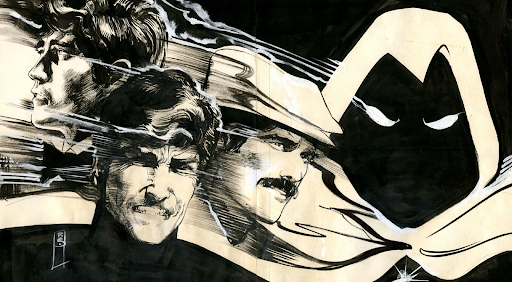


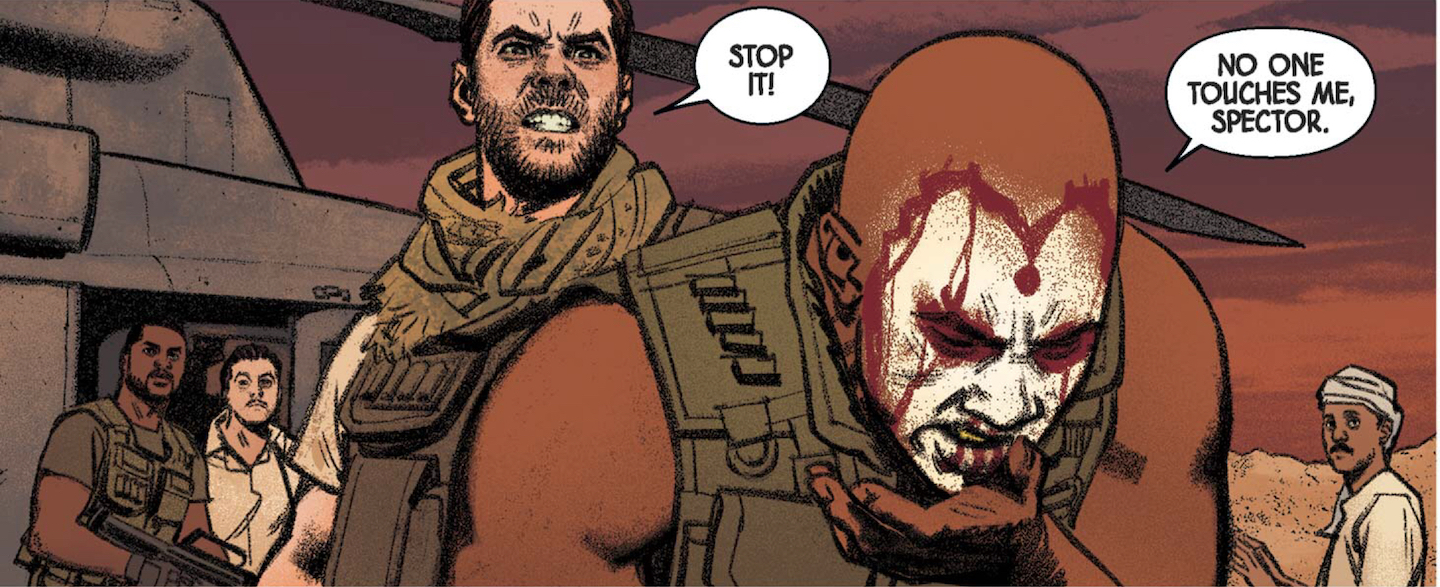

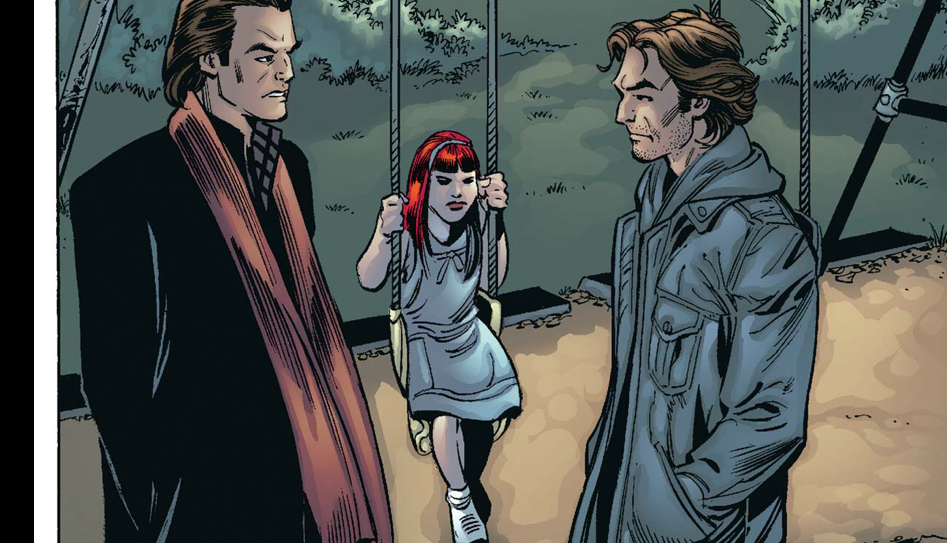

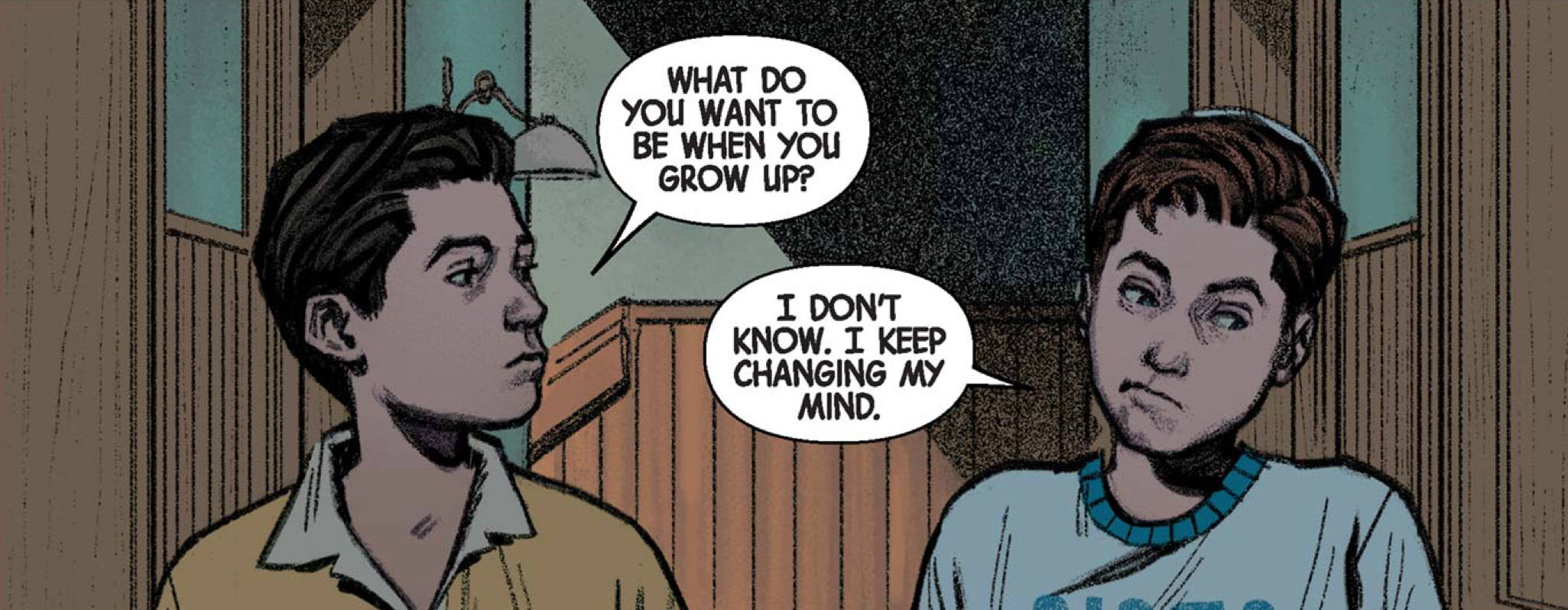
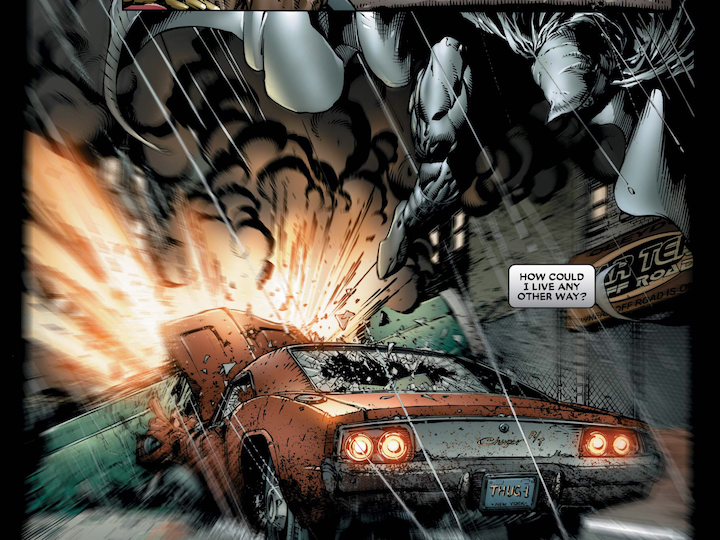
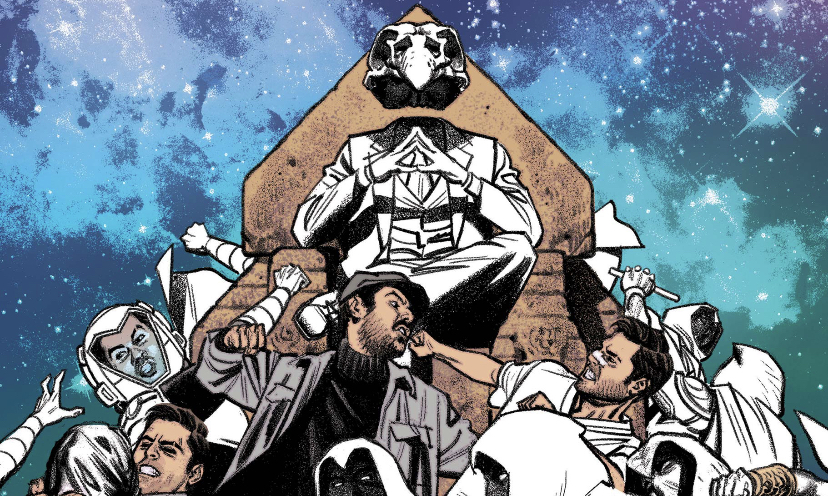
Thank you so much for writing such a detailed overview of Moon Knight. I watched the first few episodes on Disney+ and really enjoyed it, I’ve got my own mental stuff and could relate to what I was seeing on screen. However, I am by no means an expert on mental disorders and I know that some of the DID representation is a bit dodgy. I was wondering if you were going to do a review on the series? I’d love to hear your thoughts on it, and whether you think the representation is harmful or not.
This is a very good and well thought out overview; I watched the first two episodes of the TV series and had issues with the representation, and I had been curious about how the comics handled Knight’s dissociative disorder. I appreciated reading an analysis that expresses both the good and bad aspects of how the character has been handled, while providing context for the disorder and different interpretations of the character and series’ story elements
This is so incredibly thorough! I was personally confused about some of the reaction to Moon Knight (I had no idea he had DID), and this did not just clear it up for me, it also set benchmarks for what I should expect from the series if it represents DID well. Well written and very clear as well. Thank you so much 🙂
An awfully good overview